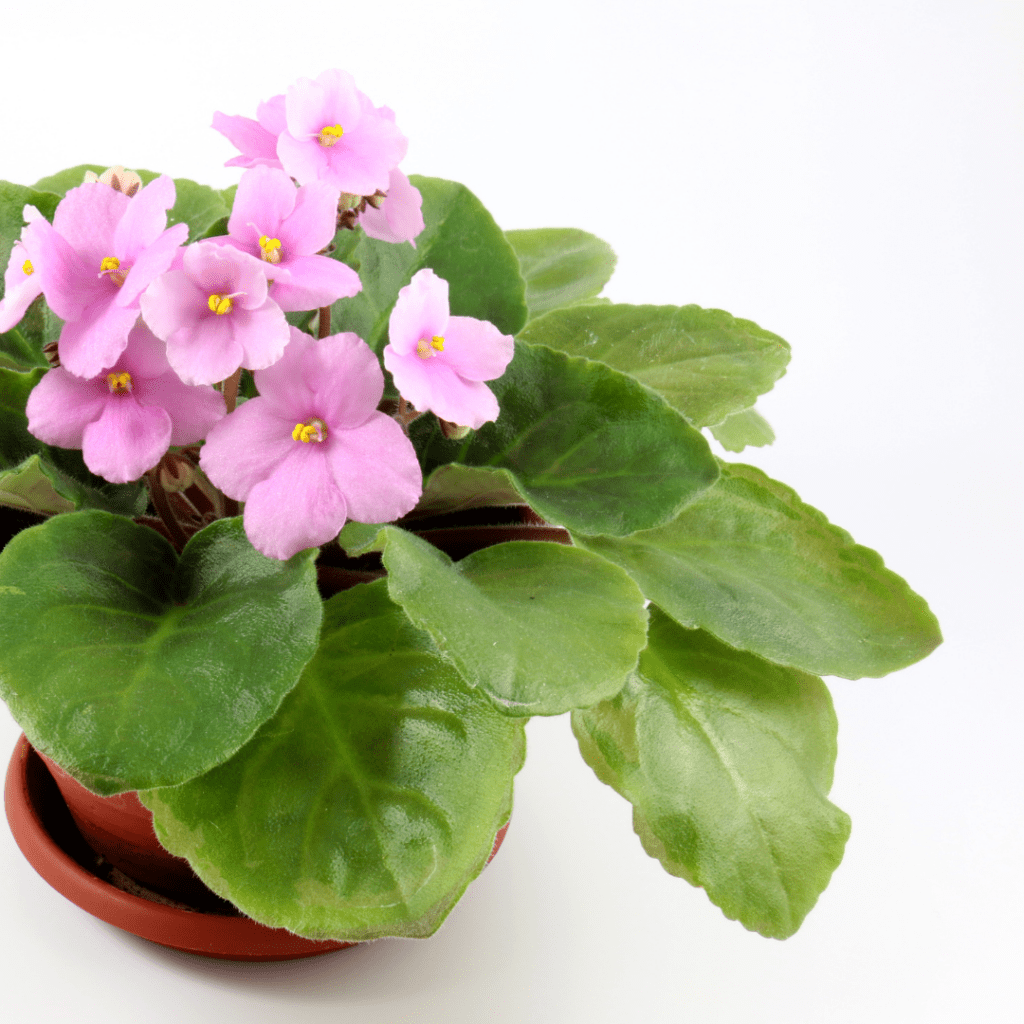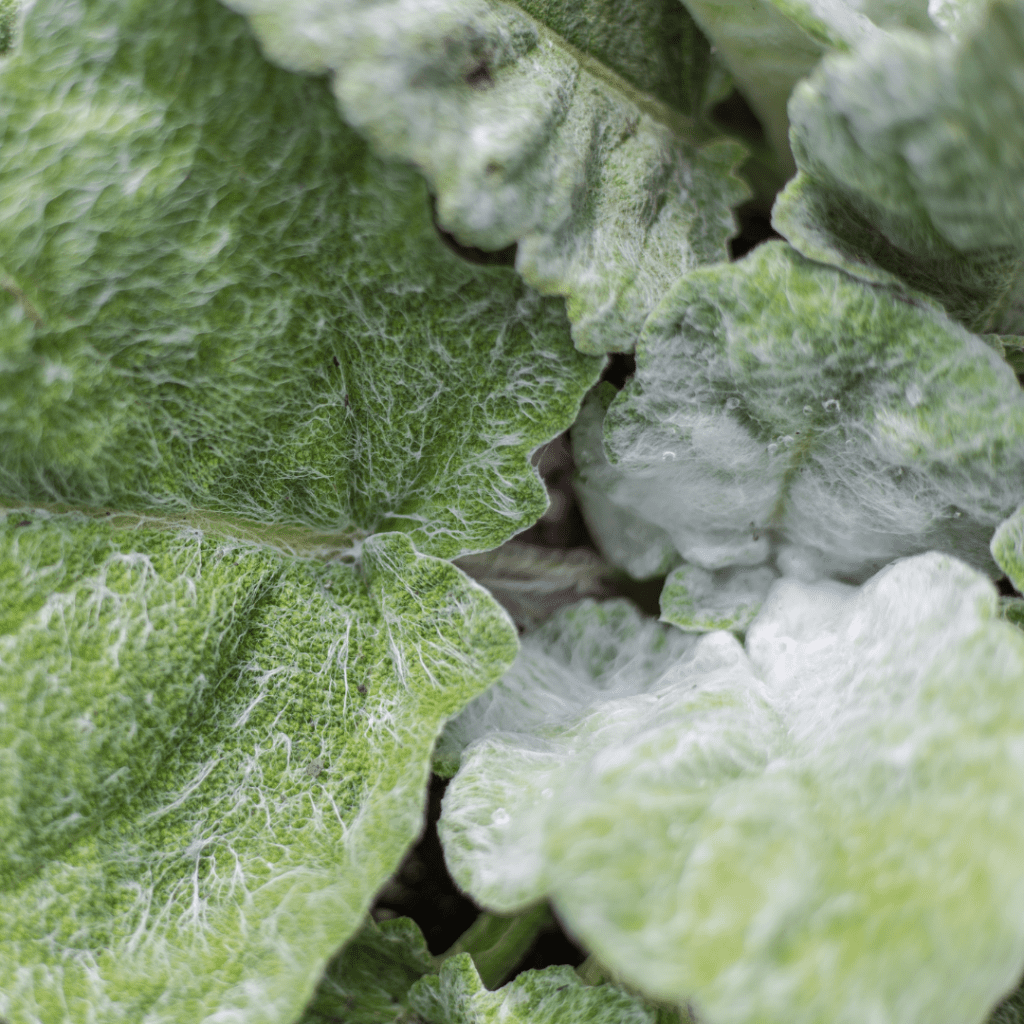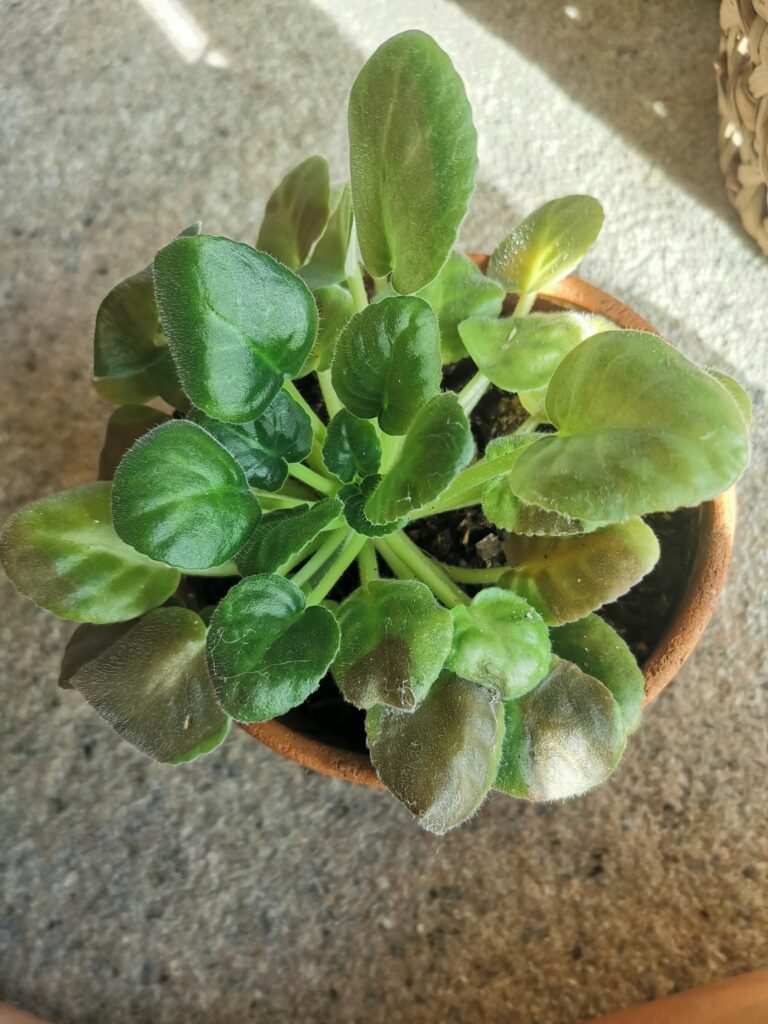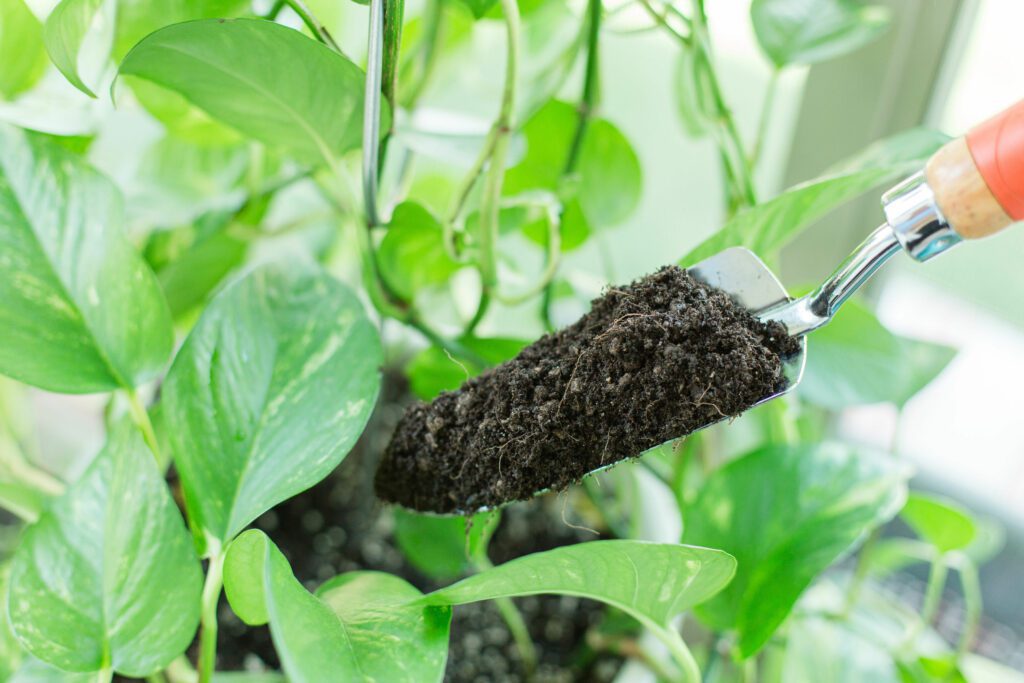Learn the six most common signs your African violet is dying and what you can do to nurse your plant back to health.
Waking up to the beautiful sight of your African violet in full bloom can bring joy to any plant lover’s heart. But if you start noticing signs of wilting, discoloration, or stunted growth on your plant after a change in care routines, it may leave you wondering if your African violet is dying and how to revive it.
The good news is that just because your African violet shows signs of distress doesn’t mean it’s beyond saving. With a little bit of knowledge and proactive measures, you can bring your African violet back to its vibrant and healthy state.
How Do I Know If My African Violet Is Dying?
Sign #1: Flower Loss or Limp Blooms


Generally, healthy blooms indicate that your plant is thriving. The opposite is also true: damaged, limp, or wilted flowers often mean your plant is distressed. If your African violet’s blooms are spent, it’s a sign your plant needs some extra care.
Sign #2: Crown and Stem Rot
Crown and stem rot is easy to notice. If your plant looks sickly in its middle or along its stems, it’s likely suffering because of decay and fungus, which causes your plant to rot. If you notice crown rot, your plant is already significantly damaged since rot usually starts beneath the growing mix and affects roots first.
Sign #3: Burnt or Dry Leaf Tips


Burnt, dry, or crumbly leaf tips are a sure sign your African violet lacks moisture. When you notice your African violet leaves browning, be sure to act right away—African violet leaves can easily suffer necrosis, an irreversible form of cell damage.
Sign #4: Drooping Leaves


Drooping leaves typically indicate your plant is thirsty or suffering from low temperatures. Unlike wilting, drooping usually occurs on the whole leaf, not just portions of it. Also, drooping leaves typically appear across the entire plant rather than in specific areas.
Sign #5: White Leaves and Flowers


Your plant’s leaves will have a natural sheen since African violet leaves are unique. But if you notice your plant developing white, powdery leaves, something is wrong.
Sign #6: Brown Spots on Leaves


Brown spots on African violets are often referred to as leaf scorch, a form of sunburn. Beyond being unsightly, leaf scorch can cause damage to your plant, potentially leading to its demise without proper care techniques.
How To Revive A Dying African Violet


Fix 1: Ensure Ideal Mare & Maintenance Routines
Signs of flower loss and dry leaf tips show your plant is running low on water. Ensure you keep the soil damp but not sopping wet to prevent crown and stem rot. If you are unable to measure the right amount of water with your watering can, consider investing in a moisture meter that can help you determine the right amount of water your plant needs.
If this is why your African violet is dying, the watering routine is to blame. It should take a few weeks for your plant to start showing signs of recovery with new growth, healthy blooms, and stronger stems.
Indoor Gardening Tip: Encourage big, strong blooms with my favorite African Violet Plant Food, a gentle fertilizer formulated to stimulate growth and keep your plant hearty year-round.
Fix 2: Repot in well-draining soil.


Crown and stem rot is often caused by over-watering—the most common way new growers accidentally kill their African violets. To combat your over-watering tendencies, use a coarse, well-draining indoor soil. Specialty African violet potting mix contains peat moss and vermiculite—a mixture that is light enough to prevent over-watering yet retains enough moisture to keep your plant from dying prematurely.
Indoor Gardening Tip: If you see signs of rot in the roots or crown, you must remove them carefully with sharp pruning shears and treat the cut ends with a premium root supplement.
Fix 3: Maintain optimal light exposure.


When burnt leaves are a problem, it is usually because your African Violet receives too much sunlight. Although African violets require 16 hours of daylight, it should never be direct sunlight. I like to keep my African violets near windows with natural light, but if you don’t have that option, consider using a grow light specifically designed for houseplants.
Pro Indoor Gardening Tip: Invest in a houseplant probiotic formula to help boost your plant’s ability to photosynthesize and stay in optimal health.
Fix 4: Control temperature fluctuations.
While drooping leaves are often a common sign your plant needs water, a continuous problem may point to temperature issues as the reason your African violet is dying and how to revive it.
African violets should be kept in temperatures between 65-80 degrees Fahrenheit and kept away from drafts emitted by windows, air vents, and heating or air conditioning units.
Pro Indoor Gardening Tip: Use a space heater or air conditioning unit to maintain consistent temperatures throughout your home, especially around your African Violet’s location.
Fix 5: Keep the humidity stable.
Your African violets need the area around them to be humid so you don’t have to worry about why your African violet is dying and how to revive it. When humidity is off, you’ll notice signs like powdery mildew and fungal growth. To keep humidity levels consistent, use a humidifier or place your African violet pot on a tray filled with pebbles and water. As the water evaporates from the tray, it will create a stable humidity level for your plant.
Pro Indoor Gardening Tip: If you don’t live in a humid environment, consider grouping houseplants together to create a mini ecosystem that mimics the natural humidity of the tropics.
Fix 6: Prune regularly.


Brown spots, dead leaves, and withering blooms indicate your plant isn’t getting the moisture it needs. To fix this, you’ll need to prune away any dead leaves or flower stems and remove any diseased or dying tissue from the stem or crown of your African violet. Be sure to use sharp pruning shears to prevent further damage and disinfect them after every use to avoid spreading diseases.
Grow beautiful houseplants stress free with our top recommendations for beginner indoor gardeners.
FAQ: Why is My African Violet Dying and How To Revive It?
1. How long does it take for an African violet to revive?
The time it takes for an African violet to revive will vary depending on the severity of the issue and how quickly you can address the problem. However, with proper care and maintenance, you can start seeing signs of recovery in just a few weeks.
2. What is the best way to water an African violet?
The best way to water an African violet is to water it from the bottom by placing the pot in a tray of water for 30 minutes. This allows the roots to absorb the water without causing damage to the leaves or crown. Alternatively, you can use a watering can with a long spout to pour water directly onto the soil while being careful not to drench the leaves.
3. How can I tell if pests or diseases are causing my African violet to die?
Pests and diseases can often cause an African violet’s decline. Look for signs such as yellowing leaves, powdery mildew, or any unusual spots on the leaves or stems. If you suspect your plant may be infested with pests or have a disease, it is essential to take immediate action by isolating, treating, and monitoring your plant closely to prevent further damage.
Keep Your African Violet Looking Its Best
You don’t have to wonder why your African violet is dying and how to revive it anymore! By knowing the signs and understanding how to care for your plant properly, you can ensure that your African violet remains healthy and thriving year-round. Happy growing!
Want more ways to keep your African violet looking its best? Sign up for our newsletter to get the latest tips, tricks, and advice on indoor gardening. Plus, be the first to know about exclusive deals and promotions on premium plant care products.





